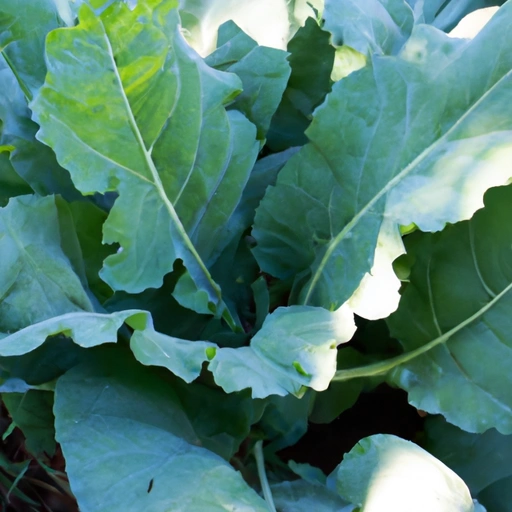Collard Greens
Description

Collard greens are a nutritious vegetable known for their large, dark-colored edible leaves and distinctive taste. They belong to the Brassica family, which also includes broccoli, Brussels sprouts, and cabbage. Collard greens are a staple vegetable in various cuisines, particularly in the southern United States, where they are often prepared as a hearty side dish. They can be identified by their smooth, flat leaves that do not form a compact head like cabbage does. These greens are versatile in the kitchen and can be cooked in multiple ways to add both flavor and nutritional benefits to a wide array of dishes.
Common uses
Collard greens are commonly used in a variety of culinary applications. They are frequently boiled or simmered with meats or other vegetables, but they can also be sautéed, steamed, or even eaten raw in salads. The leaves are hearty enough to withstand long cooking times, which makes them ideal for slow-cooked dishes. They are often seasoned with vinegar, pepper, smoked meats, and onions, which complement their earthy flavor.
Nutritional value
Calories
Collard greens are low in calories, with approximately 49 calories per 190 grams (1 cup, chopped).
Protein
They offer about 4 grams of protein per 190 grams.
Fat
Collard greens contain a negligible amount of fat, with 0.9 grams per 190 grams.
Carbohydrates
There are about 9 grams of carbohydrates in a 190-gram serving.
Vitamins
Collard greens are an excellent source of vitamins, particularly vitamin K, providing 773% of the RDI per 190 grams, and vitamin A, with 308% of the RDI.
Minerals
They are also rich in minerals like calcium (27% of the RDI) and manganese (26% of the RDI) per 190 grams.
Health benefits
Due to their high nutrient content, collard greens are associated with numerous health benefits. They are known for supporting bone health, thanks to their high vitamin K content. The fiber in collard greens aids in digestion and helps maintain a healthy weight by promoting feelings of fullness. The antioxidants and anti-inflammatory compounds in collard greens are believed to reduce the risk of chronic diseases such as heart disease and cancer.
Potential risks
While collard greens are generally safe to eat, they may pose risks for individuals on blood-thinning medications due to their high vitamin K content, which plays a role in blood clotting. It is also important to wash them thoroughly to remove any pesticides and to prevent consuming excessive amounts of oxalates, which can contribute to kidney stone formation in susceptible individuals.
Common recipes
Collard greens are famously used in Southern-style recipes such as collard greens with ham hocks, or mixed into stews and braises. They can also be found in recipes for collard green wraps, where the leaves are used as a gluten-free wrap alternative.
Cooking methods
Common cooking methods include boiling, simmering, sautéing, and braising. They can also be added to soups or stews, cooked with other leafy greens, or prepared with a mix of spices for added flavor.
Pairing with other ingredients
Collard greens pair well with ingredients like smoked meats, onions, garlic, vinegar, chili flakes, and beans. They can also be complemented by grains such as rice or cornbread.
Summary
Collard greens are a versatile and nutritious ingredient that can be incorporated into a wide range of dishes. They offer a variety of health benefits and are an important part of cultural culinary traditions, particularly in the American South. While they can be enjoyed by most, individuals on certain medications should consume them with caution. Easy to cook and full of flavor, collard greens are a beloved green vegetable worldwide.